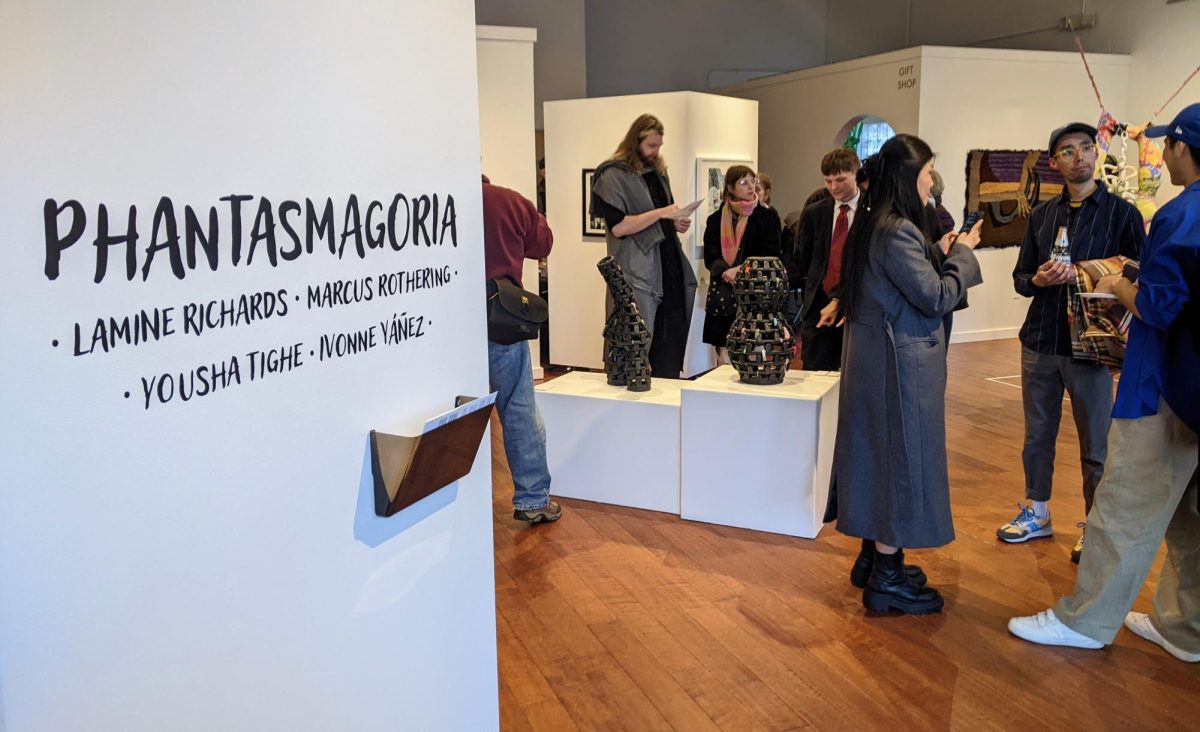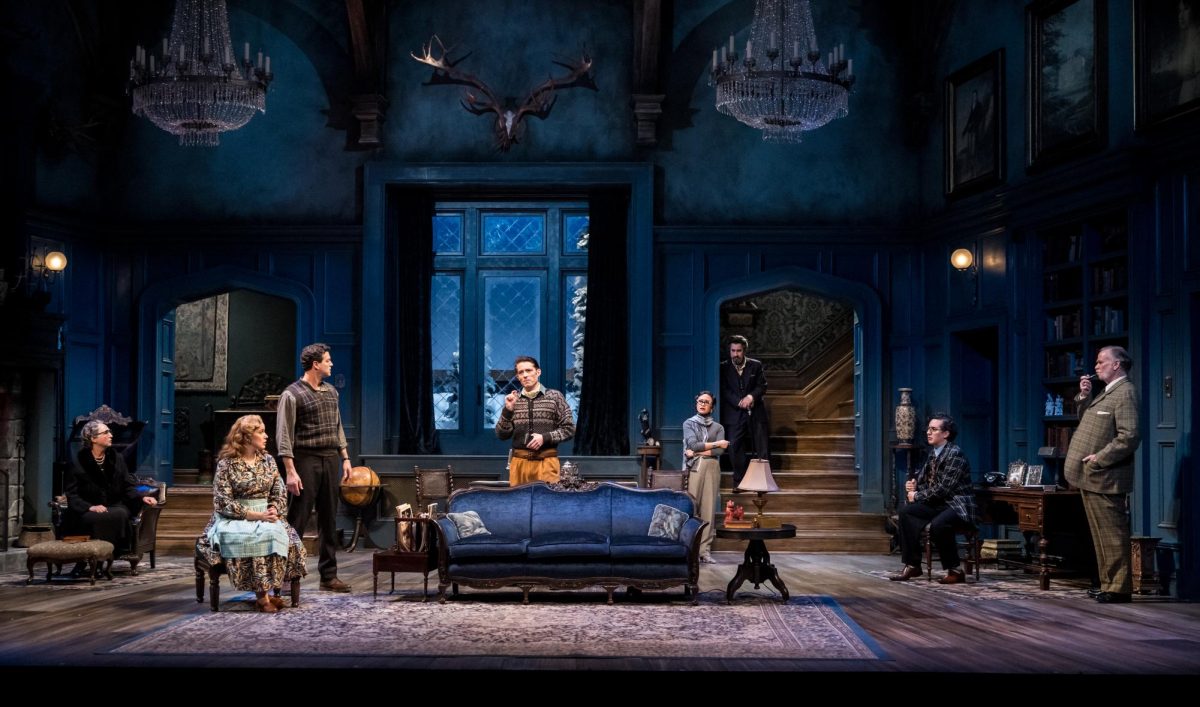Artists Ben Moore and Telos first met in 1998 on a college campus in the heart of Iowa. Almost a decade later, with some artistic oddities and creative revelry under their belts, the pair is being showcased at the sleepy Felt Factory Arts building and Fox Tax Gallery in Northeast Minneapolis in “Drunk Girls and Dissonant Toys.” The art is saucy, offensive and playful – a fresh, frilly gut-punch delivered by two emerging local artists.
WHEN: through July 22
WHERE: Felt Factory Arts Building, 503 N.E. First Ave., Minneapolis, (612) 824-2829
TICKETS: Free
Drunk Girls
Ben Moore could easily one day be the token of the classical painting canon. His formalist techniques are about as honed as the painting greats, yet he chooses some pretty, um, savory subjects to paint.
Back in the day, he painted a Luchador series, compiled of scenescapes of naked men in masks flailing about. A “Bling Series” is soon in the works, which, according to Moore, depicts the garish subculture of “sequins, big earrings and shit.” But currently, he’s displaying his prized series, simply titled “Drunk Girls.”
Yes, he paints wasted girls. And the more annihilated the better. Moore, a classically trained painter from Iowa who has a penchant for Dutch painting and Catholic iconography (“those paintings are absolutely bonkers!”), has taken the fine-tuned technicalities of his art – the shaded hues of a fleshy bosom or the lopsided brushstrokes of a tousled bang – and reappropriated it for the modern girl-gone-wild.
His series of portraiture consists of young women in various stages of blackout or pass-out, usually positioned against floral upholstery or carpeting. Their faces look swollen and squishy, their twisted, distorted expressions coinciding with the haphazard body positions. Some have cleavage. Others have chest pimples. Some look dead, while others look posed.
“They’re not quite structurally sound,” Moore explained.
In total, 12 “Drunk Girls” are on display in the gallery space. Each is painted with the vigor and obsessive attention to detail that one would expect from the great aristocratic 18th-century portraitures.
“The painting is the first thing that draws you in. It’s believable as painting. Then you’re drawn into this uncomfortable space and you’re not sure how to deal with it,” Moore said. “I like how they’re kind of a bit of a sucker punch,” he added.
The paintings in themselves might seem eerie and suggest a creepy type of metavoyeurism, but a deeper dig suggests the urge to illuminate the dark side of our lush culture, and the contradiction found in the much-valorized “party girl” persona. Here, you can practically smell the stench of vulnerability. And that’s on purpose.
Moore first started painting the series after he found a photo of his sister’s friend, sloshed and snoring, in a stack of photos. After that, he turned to Google for the subsequent “models.”
“You had to be careful how you type that shit in otherwise you get lots of porn,” he said.
The best – and most troubling – part of the viewing experience is the questions that will undoubtedly race through the viewer’s mind. In the dark crevices of our cultural consciousness, do women all become limp sex toys when drunk? It’s this glaring meditation on desire and power that pervades all the portraits, and gives the series its bite.
Dissonant Toys
Telos, on print, through art and in life, likes to be a man of shrouded, shape-shifting identity. He doesn’t want his real name printed, and he showed up at the “Drunk Girls and Dissonant Toys” opening sporting a black ski mask and power suit – personifying the quizzical masked toys of his art while creating a metadiorama using attendees as social pawns. This guerilla Geppetto lives and breathes his art, but at the same time, demands that the toys, not the name behind the artist, speak for themselves.
In “Dissonant Toys,” Telos has created a myriad of dioramas out of hand-carved plastic toy figurines amid cookie-cutter scenes of modern suburban, corporate life. Modeled after the iconic consumptive figures epitomized in Legos and Fisher Price people, his dynamic place of tension and consumer fog collides within monotonous, everyday spaces.
He calls his work a reaction to the vinyl toy industry, but clearly more than just toy sentiments are portrayed in the photos. The dioramas are loaded with meaning – little plastic figures donning jihadist masks and bomb vests, sudsing up their Hummers or leading a boardroom meeting.
“I sort of wanted to use them for what they are, an unsuspecting toy, and manipulate the scene. I like that sort of tension,” Telos said.
At first, the photos of the dioramas seem charming, cutesy, even, like a 3- year-old pointing a squirt gun at your head. But they inevitably open a proverbial can o’ worms about our identities within the swirling magna-vortex of consumption, just by being creepy and idiosyncratic. After all, leaf-blowing in the suburbs with a magazine round strapped to your shoulders has its own dilemmas, even when art is concerned.
“I like to see the day-to-day as absurd and the far-off as commonplace,” Telos explained. And who’s to blame him for his lopsided take on American consumptive life? After all, the toy factories de la Resistance would be proud.







